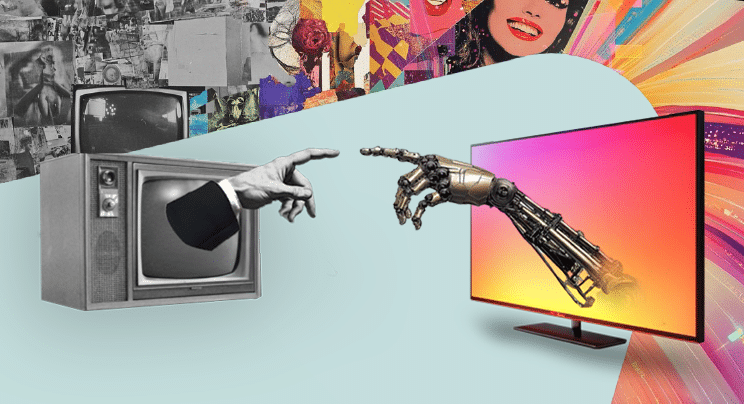High Definition Has Its Place--In Cameras
You might not have noticed that a meal of a cheeseburger, fries and a milkshake with a Cheerio is about as heart-healthy as one without. Yes, I'm making a plea here for everyone to shoot HDTV.
"But, Mario, what do hamburgers have to do with HDTV?"
Any child can tell you they both start with "H." But, on account of my using cheeseburger instead of hamburger, that ain't what I had in mind.
Cheerios, methinks, contain some identifiable amount of oat bran, and oat bran, methinks, has a Roto-Rooter effect on heart arteries. But I'd bet imaginary dollars to imaginary oat-bran donuts that the artery-clogging fats in that cheeseburger meal would overwhelm anything the Cheerio offers in the opposite direction.
That gets me to HDTV. Like just about everyone else who visits the NAB show, I've wandered into plenty of production trucks that have HDTV cameras. I've also visited quite a few outside of the really big show. That said, I've been in only one HDTV truck.
"But, Mario, you just said you've been in plenty!"
No. Kindly re-read. I said I've been in plenty of trucks that have HDTV cameras. They might be called HDTV trucks by their owners and users, but they've all got plenty of stuff that ain't HDTV.
The one and only truly HDTV truck I've been in was all HDTV, period. Every camera, lens, recorder, switcher and router was HD, of course. But so was every spigot, signal and monitor, including the little 3-inch ones the tape and video ops used just for identification.
The truck belonged to NHK, the Japan Broadcasting Corp. Where they got those 3-inch HDTV tube-based monitors I may never know, but that's the only HDTV truck I've ever been in that had them. In every other HDTV-related truck I've ever been in (including some more-recent NHK versions), the little tiny monitors ain't HDTV. That's fine, on account of no one being able to see HDTV on such a tiny screen anyhow.
Don't take my word for it. How about "Consumer Reports" magazine, the publication of the nonprofit Consumers Union, dedicated to guiding buyers through promotional hype? They do extensive product testing before reporting.
Here's what they had to say about HD versus ED (enhanced-definition, 480-line) plasma TVs in their March issue: "In our tests of 22 plasma TV models, the best ED set looked just as good with HD content as the HD sets. (One note: Sit closer than eight feet away from an ED set and you're likely to see individual pixels, making the image appear coarse)."
I don't know that I'd use those exact same figures, but I go along with their point. On even a 42-inch 16:9 screen viewed at normal viewing distances, normal viewers can't see more than ED resolution. Even up close, a 3-inch monitor would have a hard time getting HD into an eye. Maybe with a magnifying glass, you could make out the detail.
That's the cheeseburger-and-Cheerio phenomenon. If your meal is an artery-clogging special, the trace amounts of oat bran ain't going to help. Likewise, if your monitor is 3-inches diagonally, HD resolution is about as useful as a Cheerio in a greaseburger.
That's resolution, the 1920 x 1080 that folks talk about when they talk about HD. But the "Consumer Reports" folks talked about "HD content" on those ED sets they measured. They didn't come right out and say it there, but HD content looks better on ED sets than ED content. Heck, it looks better on NTSC sets, too, even if it's being played back from some EP-mode analog VHS tape.
"But, Mario, if viewers can't see the difference between HD sets and ED sets, why does HD content look better?"
My pals at "Consumer Reports" and I agree that HD resolution on even a 42-inch 16:9 set at normal viewing distance is pretty much invisible. But HD sharpness is something else.
Sharpness is a sensation proportional to the square of the area under a curve plotting contrast ratio against detail resolution. Let me try putting that into American English.
The vertical scale is contrast ratio. The horizontal scale is fineness of detail. Down at zero detail, you've got the maximum contrast ratio. Hey, the TV is either off or on, right? It's either daytime or nighttime.
Way up at the finest detail (those 1,920 pixels per line of HDTV), the contrast ratio is pretty pathetic. Between lens losses and imaging-chip sampling and preamp roll-off and A-to-D filtering, there ain't much there.
So the curve starts high and ends low. In between, it tends to look like the right half of a bell--slightly drooping shoulder, rapid drop to the foot, long low flare out to the toe. If something is proportional to the square of the area under that curve, the bulk of that area is going to be under the shoulder. There ain't much under the foot and toe.
Well, now, guess what! If 1,920-pixel detail is at the very edge of the toe, it ain't contributing much to sharpness. Neither is the foot. The shoulder typically drops off somewhere around about maximum standard-definition detail. An HD lens raises and extends the shoulder. So does an HD imaging chip. So do an HD preamp and an HD A-to-D.
Switch from shooting SD to HD, and you increase sharpness for everyone, even the poor schnook watching EP VHS tape. Switch from an SD to an HD screen, though, and all you add to the sharpness is what's under the foot of the curve, which is one whole heck of a lot lower than the shoulder. That ain't much.
So, if you're replacing cameras and lenses, go HD if you can possibly afford it. For anything else, take your time.
The professional video industry's #1 source for news, trends and product and tech information. Sign up below.
